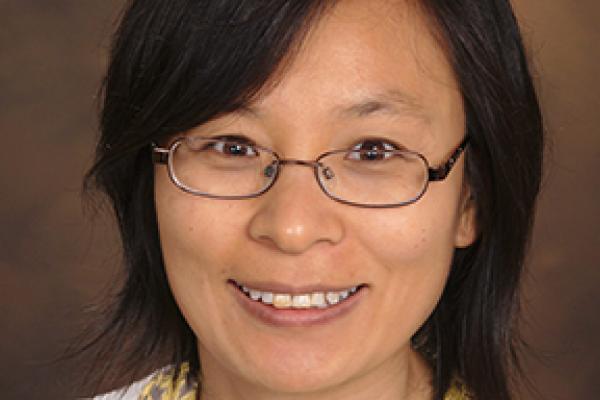Chuan Xue's NSF CAREER Award Supports Work on Processes Related to Neurodegenerative Diseases

Chuan Xue, assistant professor of mathematics, has received the National Science Foundation's top award supporting the work of the nation’s most promising junior researchers. Her selection recognizes her exceptional research, teaching excellence and commitment to integrating teaching with research.
Xue's $408,628, five-year NSF CAREER Award for “Multiscale modeling of axonal cytoskeleton dynamics and axonal transport” will fund her project to develop new models to help understand the dynamic behavior of the neuronal cytoskeleton and potential causes of intracellular traffic jams.
Xue’s research area is mathematical biology. Her group develops stochastic, deterministic, multiscale models and methods to help understand problems in cell and systems biology, and it has made significant contributions in the modeling of directed cell movement and wound healing.
“We continue to be amazed by how useful mathematics is to biology,” Xue said. “In the era of data explosion, we need mathematical models to explain data, make sense of data and guide data collection. It is very fortunate that the Mathematical Biosciences Institute is here; it allows me to meet world experts in my area without any travel.
“This award will continue to fund a very exciting project that I have been working on over the last couple of years together with my students. It is about cell cytoskeleton dynamics and intracellular traffic problems in nerve cells. These are crucial processes related to a cell's life and neurodegenerative diseases. This project also provides excellent research opportunities for graduate students in applied mathematics and mathematical biology.”
Using various mathematical models, Xue and her students will investigate testable hypotheses and guide new experiments to advance a better understanding of neurodegenerative diseases such as ALS.
“We use mathematical models to make sense of existing experimental data and multiscale methods to draw connections between data collected at different spatial and temporal scales,” she said. “Then, we make testable predictions using these models. We also develop new mathematical theory inspired by these applications.”
“The modeling is in collaboration with cell biologist and Neuroscience Professor Anthony Brown, and it is exciting to see that his lab has started to test our model predictions.”
In collaboration with the Ohio Supercomputing Center summer educational program, Xue will use the educational component of her funding to pass on the excitement of mathematical biology to precollege students. She will promote these opportunities through her activities with Ohio State’s STEAM factory.
“High school students will learn about mathematics, intracellular traffic jams and neurodegenerative diseases. This is what I want my kids to do when they are older.”
